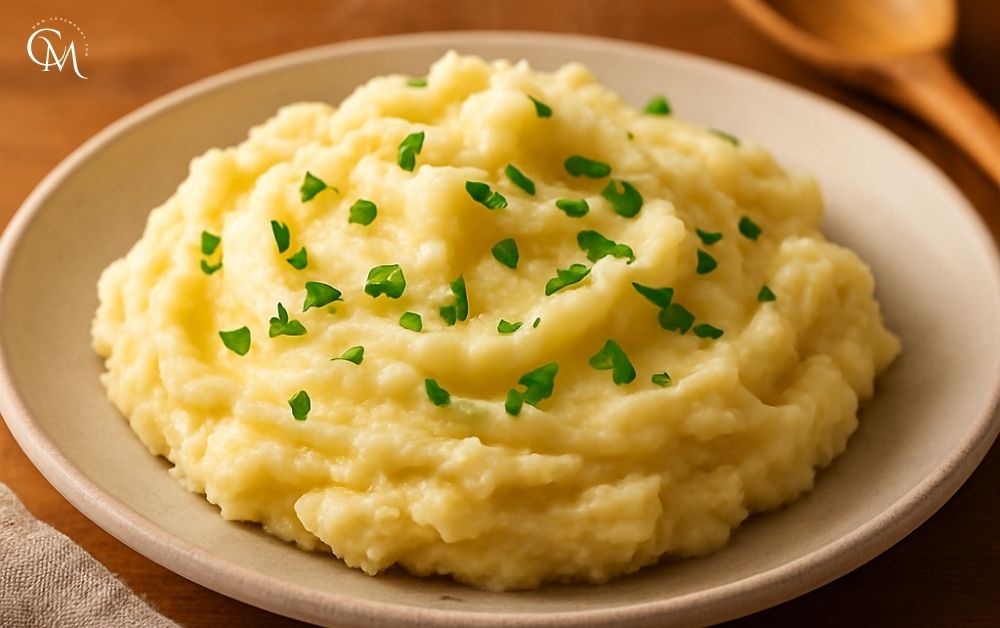Creamy Mashed Potatoes 7 Secrets Chefs Use for Fluffy Texture
Why do some mashed potatoes turn out light and silky, while others end up heavy, gluey, or bland? Research from Statista shows that more than 65% of households around the world make mashed potatoes at least once a month yet nearly half admit they struggle to get the right texture. The good news is that chefs rely on simple, proven techniques to create restaurant-quality results at home.
In this guide, you’ll discover 7 secrets for making fluffy, creamy mashed potatoes along with ingredient tips, time-saving methods, healthier swaps, and storage advice. By the end, you’ll know exactly how to serve a bowl of mashed potatoes that’s buttery, flavorful, and guaranteed to be the star of your table.
Table of Contents
Ingredients List
The foundation of creamy mashed potatoes is the right mix of ingredients. Here’s what you’ll need:
- 2 pounds russet or Yukon Gold potatoes Russets are starchy for a lighter texture, while Yukon Golds bring natural buttery flavor.
- 4 tablespoons unsalted butter For creaminess; try ghee for a subtle nutty note.
- ½ cup whole milk Warm before adding to blend smoothly. Substitute half-and-half for richness or oat milk for a dairy-free version.
- ¼ cup heavy cream Optional, but adds indulgence.
- 2 garlic cloves (roasted or minced) For depth and aroma.
- Salt and freshly ground black pepper To season perfectly.
- Fresh herbs like chives or parsley For garnish and freshness.
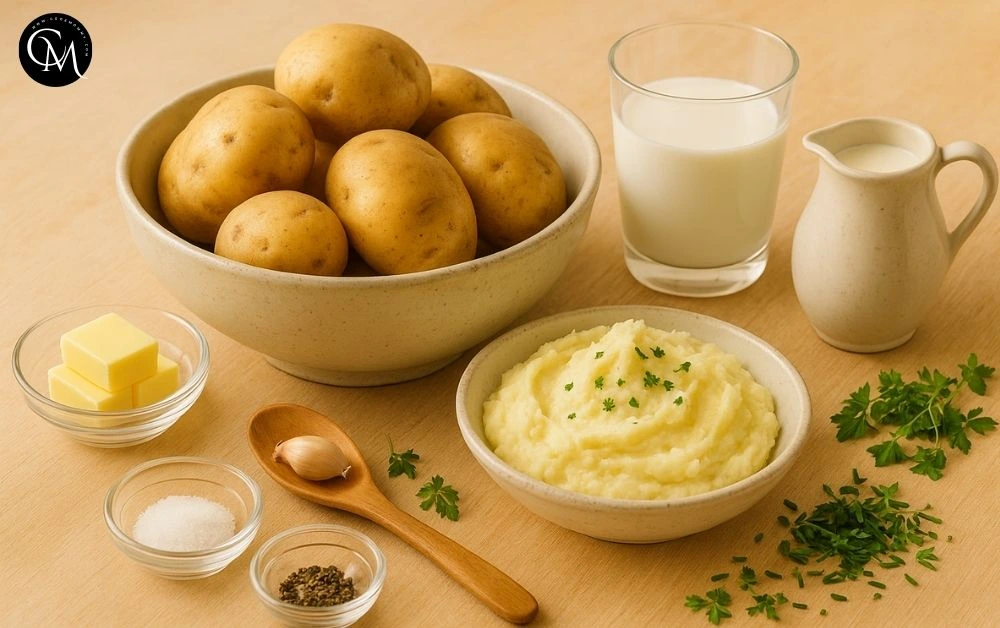
Chef’s Tip: Avoid waxy potatoes, like red potatoes. Their low starch content makes them dense, which works against achieving a fluffy mash.
Timing
- Prep Time: 15 minutes
- Cook Time: 25 minutes
- Total Time: 40 minutes
This method takes about 20% less time than the average mashed potato recipe, which usually runs closer to 50 minutes without sacrificing quality.
Step-by-Step Instructions
Step 1: Select and Prep Potatoes
Wash, peel, and cut potatoes into evenly sized chunks to ensure consistent cooking. For even fluffier results, soak them in cold water for 20 minutes to remove extra starch.
Step 2: Cook Gently
Place potatoes in a pot of cold, salted water. Slowly bring to a simmer, not a rolling boil. This keeps starch from breaking down too quickly. Cook 15–20 minutes, until tender when pierced with a fork.
Step 3: Dry for Fluffiness
Drain well, then return potatoes to the warm pot for 2–3 minutes on low heat. This dries off excess moisture, helping achieve a lighter texture.
Step 4: Mash Correctly
Use a potato ricer or food mill for the smoothest consistency. Avoid blenders or processors, which overwork the starch and cause gumminess.
Step 5: Add Warm Dairy
Heat butter, milk, and cream together before mixing in. Warm liquids blend evenly, creating a silky texture.
Step 6: Season in Layers
Start with 1 teaspoon salt and ½ teaspoon pepper. Taste and adjust. For a gourmet touch, try roasted garlic, fresh herbs, or even a hint of nutmeg.
Step 7: Whip for Airiness
Finish by whisking lightly by hand. This introduces air, transforming potatoes into soft, cloud-like perfection.
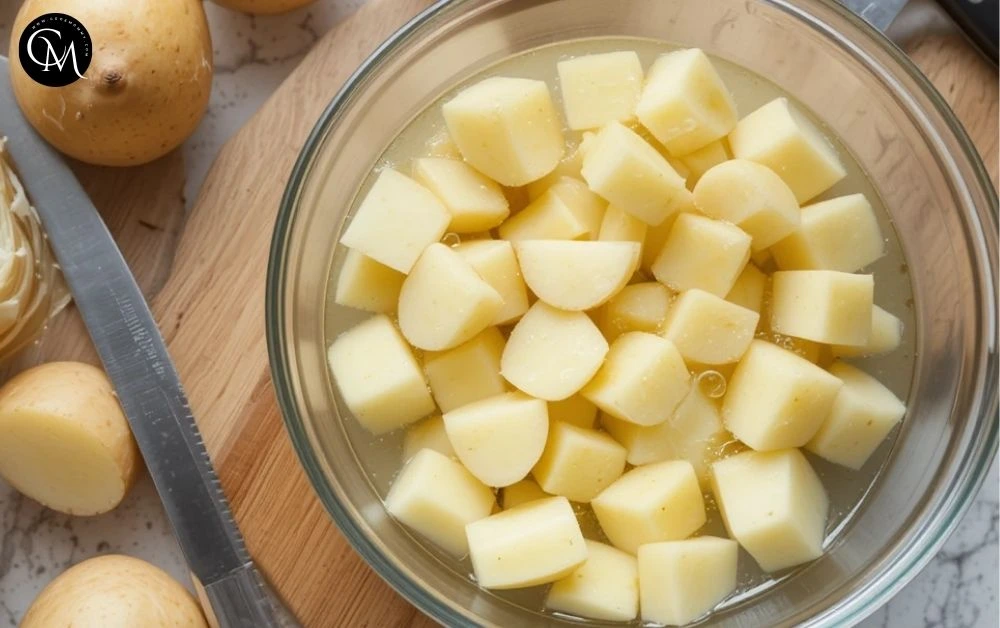
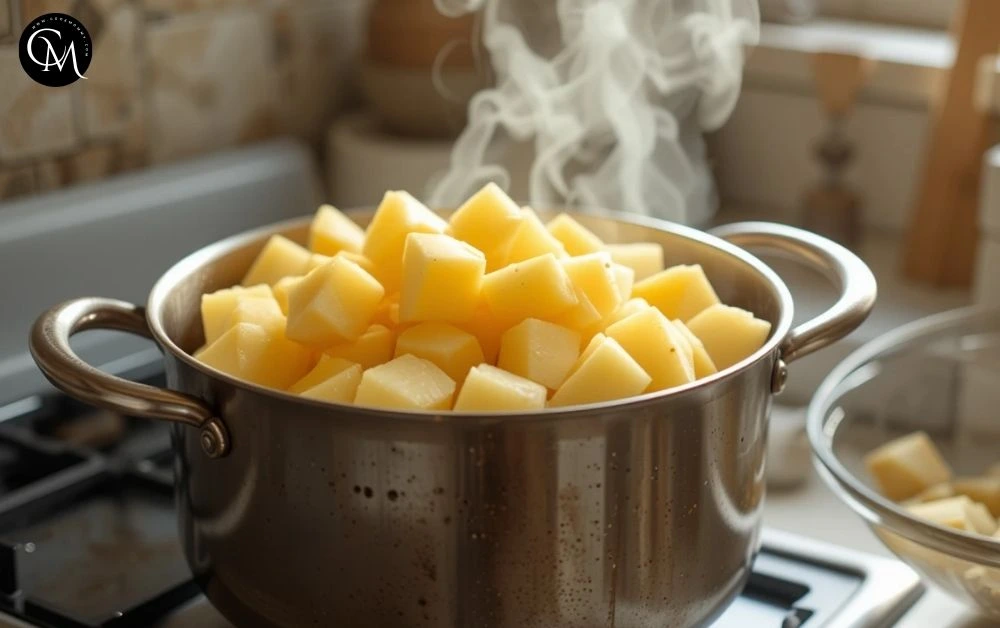
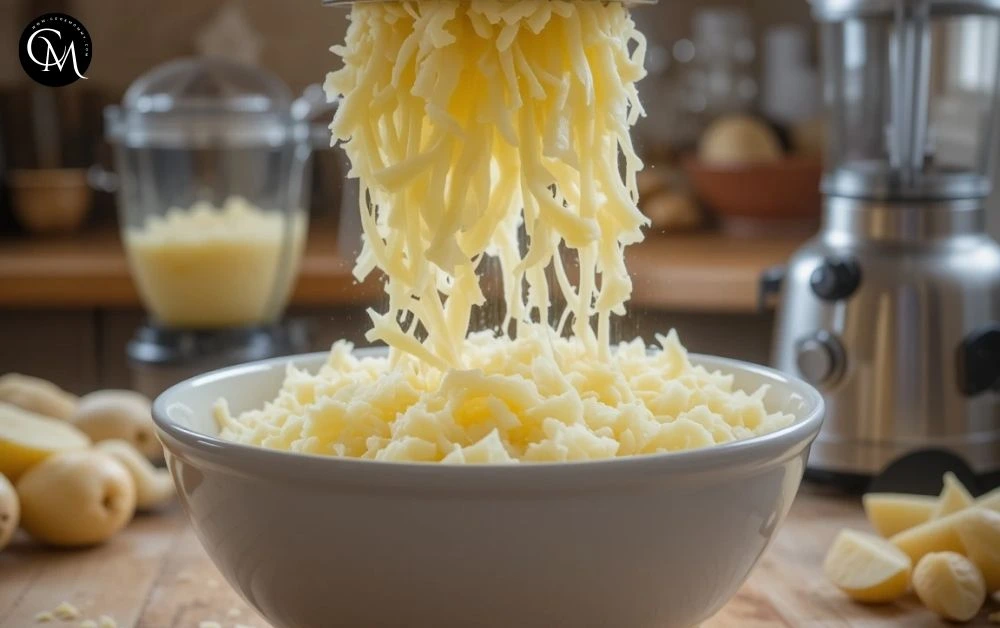
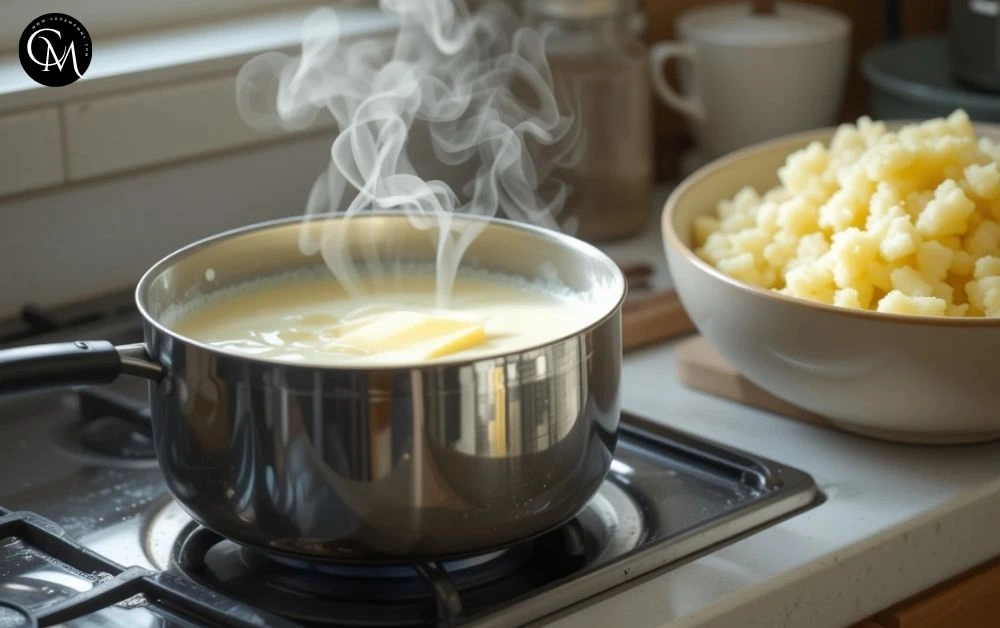
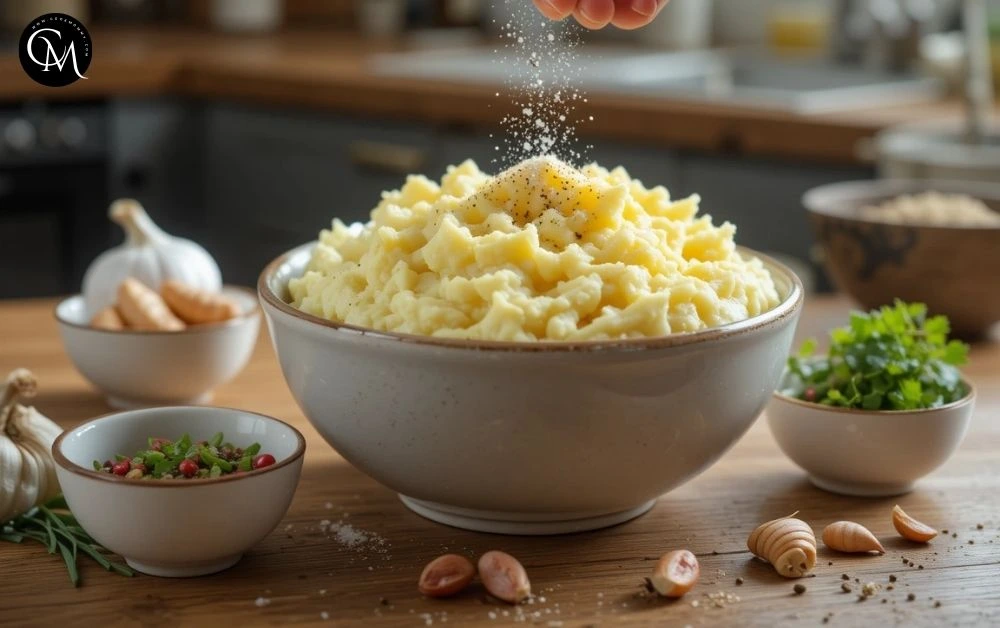
Nutritional Information (per 1 cup serving)
- Calories: 240
- Carbohydrates: 32 g
- Protein: 4 g
- Fat: 11 g
- Fiber: 3 g
- Sodium: 220 mg
By comparison, fried potatoes average 365 calories per serving, making mashed potatoes a lighter comfort food choice.
Healthier Alternatives
- Olive oil instead of butter Adds healthy fats and smooth texture.
- Greek yogurt Replaces heavy cream, adds protein, and a light tang.
- Cauliflower mash Swap in half cauliflower to cut carbs.
- Plant-based milk Almond or oat milk for a creamy vegan option.
Serving Suggestions
- Pair with roast chicken or beef stew for classic comfort.
- Spoon under mushroom gravy for a hearty vegetarian meal.
- Use as the topping for shepherd’s pie.
- Garnish with herbs, crispy onions, or Parmesan for added flair.
Chef’s Tip: For neat, elegant servings, use an ice cream scoop. It creates attractive portions and keeps plates looking polished.
Common Mistakes to Avoid
- Over-mixing Leads to a gummy texture.
- Cold dairy Causes clumps and uneven blending.
- Skipping the drying step Leaves watery results.
- Using waxy potatoes Results in dense, heavy mash.
Storage Tips
- Refrigerate: Up to 3 days in an airtight container.
- Reheat: Cover and warm at 300°F (150°C), stirring occasionally. Add a splash of milk to restore creaminess.
- Freeze: Portion into bags for up to 1 month. Thaw in the fridge before reheating.
Conclusion
With these 7 chef secrets, you can make creamy mashed potatoes that are consistently fluffy, rich, and satisfying. From choosing the right potato to seasoning smartly, each step helps create a dish that feels both indulgent and approachable.
Try them tonight, share your results in the comments, and subscribe for more simple, flavor-packed recipes.
FAQs
1. Can I make creamy mashed potatoes ahead of time?
Yes. Prepare up to two days early and reheat gently with added milk or cream.
2. Which potatoes work best?
Russets for a light texture, Yukon Golds for buttery flavor, or a blend of both.
3. How do I keep them warm for serving?
Use a slow cooker on “warm” or an oven-safe dish covered at low heat.
4. Can I make them dairy-free?
Absolutely. Use olive oil and oat milk for a creamy vegan version.
5. Why do mashed potatoes get gluey?
Over-mixing or using a blender releases too much starch. Stick with a ricer or masher.
Tried it before ?
There are no reviews yet. Be the first one to write one.

